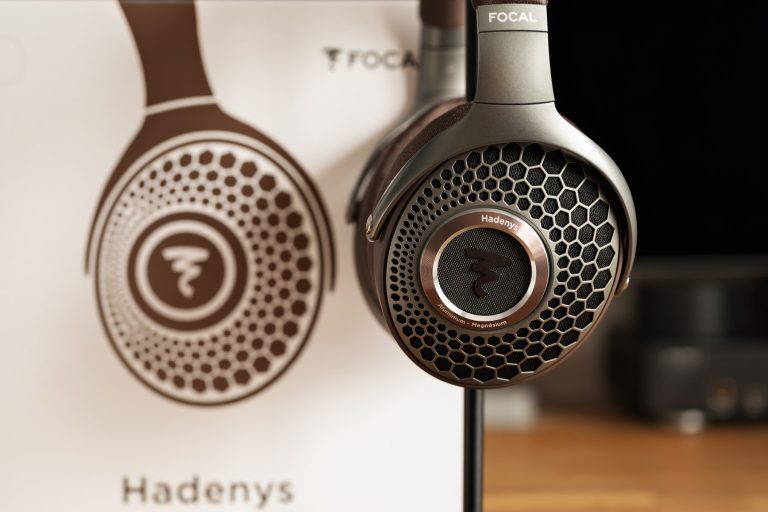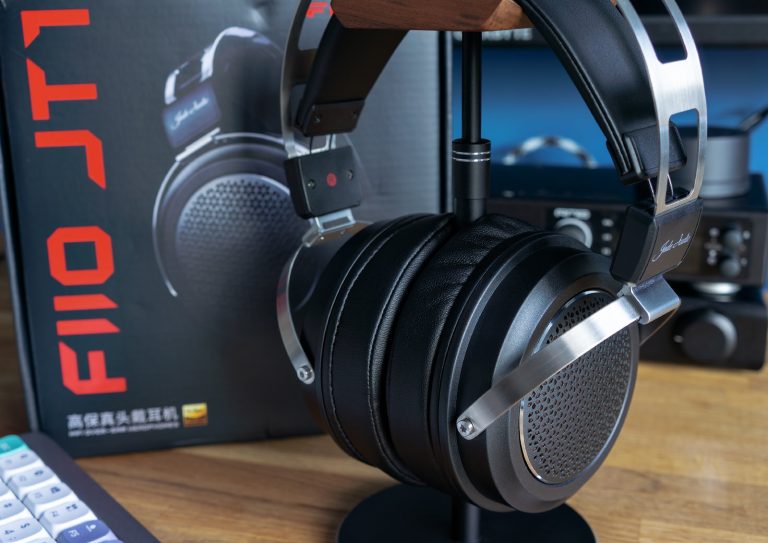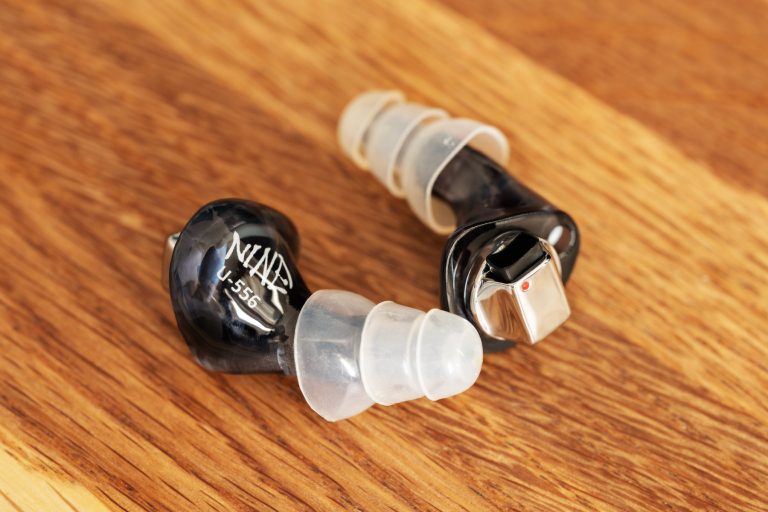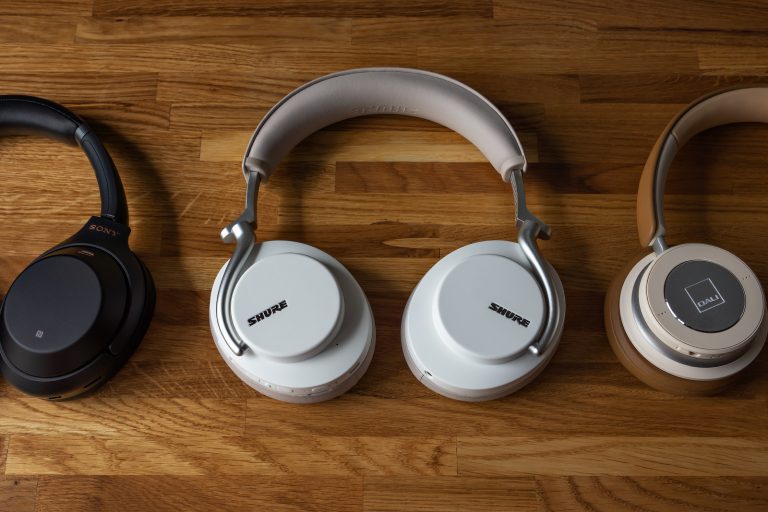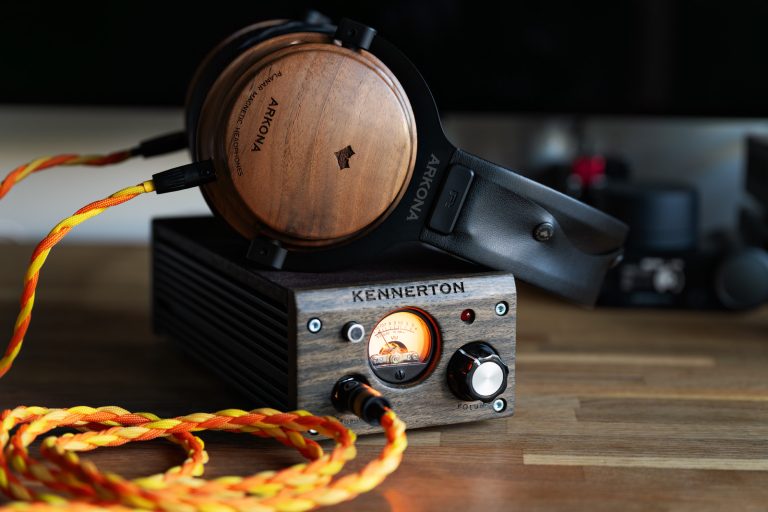Truthear x Crinacle ZERO: RED Earphones Review
A job change and all sorts of other adventures made me take some time off from the reviews. But, as the saying is, “Don’t count on it!” — there will be a lot of them in the short run, and they will be interesting, well balanced and spot on!
In short, let’s talk today about the in-ear wired earphones Truthear x Crinacle ZERO: RED (or just RED later on), which I purchased for about $55 you know where.

By the way, my old camera broke down, so I bought a new one, that’s why the pictures will be even more unbelievably brilliant now. Come on and get a look, all the pictures are clickable, as always.
Truthear in a nutshell
Truthear, a Chinese company, has just turned 2 years old, but they have already released 5 models of earphones and one portable DAC. The company was allegedly founded by one or more Moondrop people. With all the trimmings of modern Chinese fashion, Truthear has a mascot, which is an anime girl named Shiroi, weighing 45 kg, 170 cm tall and… I have no idea why I say all this.
Their partner in the field of 3D printing technology is HeyGears, whose equipment or capacities, I believe, Truthear uses to produce its devices (at least, earphones).
What’s included
The proud owner of this top-quality cardboard box will find in it as follows:

- the earphones themselves;
- a cable with a 3.5 TRS connector;
- an adapter with an additional load of 10 Ohms (I’ll tell you why we need it later);
- a set of 7 pairs of eartips;
- a fair-to-middling cover made of faux leather;
- a pile of papers with the image of Shiroi.
The box, I will repeat myself, is perfectly made, I’ve never seen anything like this. I’m totally cool with the set, it’s a good one.
Technological features, build quality
RED use a less common structure ‘a larger dynamic driver + a second smaller dynamic driver’. The first one is responsible for the subbass and bass up to 200 Hz and has a diameter of 10 mm, and the second one plays the rest of the range and has a diameter of 7.5 mm.
The manufacturer talks about the ‘CCAW voice coil’, that is, about the fact that the driver coil is made of copper-plated aluminum wire. Usually, when it applies to headphones, this is made to reduce the weight of the driver’s mobile system. This technology is not new: for example, it is also used in Moondrop Aria Snow.
Besides, ‘DLP’, or ‘Digital light processing’, 3D printing technology is mentioned. This is a three-dimensional printing process, characterized by high accuracy and the ability to correctly reproduce extremely small details.
And the last but not the least, the earphones are optimized for use at high volume (over 94 dB) and configured in accordance with the ‘IEF Neutral 2023’ curve by Corin Ako (better known as Crinacle), but with some adjustments in the bass and subbass sections, giving the sound of RED more weight and physicality.
So, RED are earphones printed on an industrial 3D printer, based on a 2-driver scheme. And Crinacle, a well-known reviewer and owner of the largest IEM measurement database, is responsible for tuning RED. The earphones have a simple but distinctive design. The enclosures are completely glossy and slightly transparent on the inside. On the outside, there are mildly glaring red inserts under a coat of varnish.

You can discern bass speakers inside at a definite angle.

The grids of the sound ducts are neat, inserted smoothly.
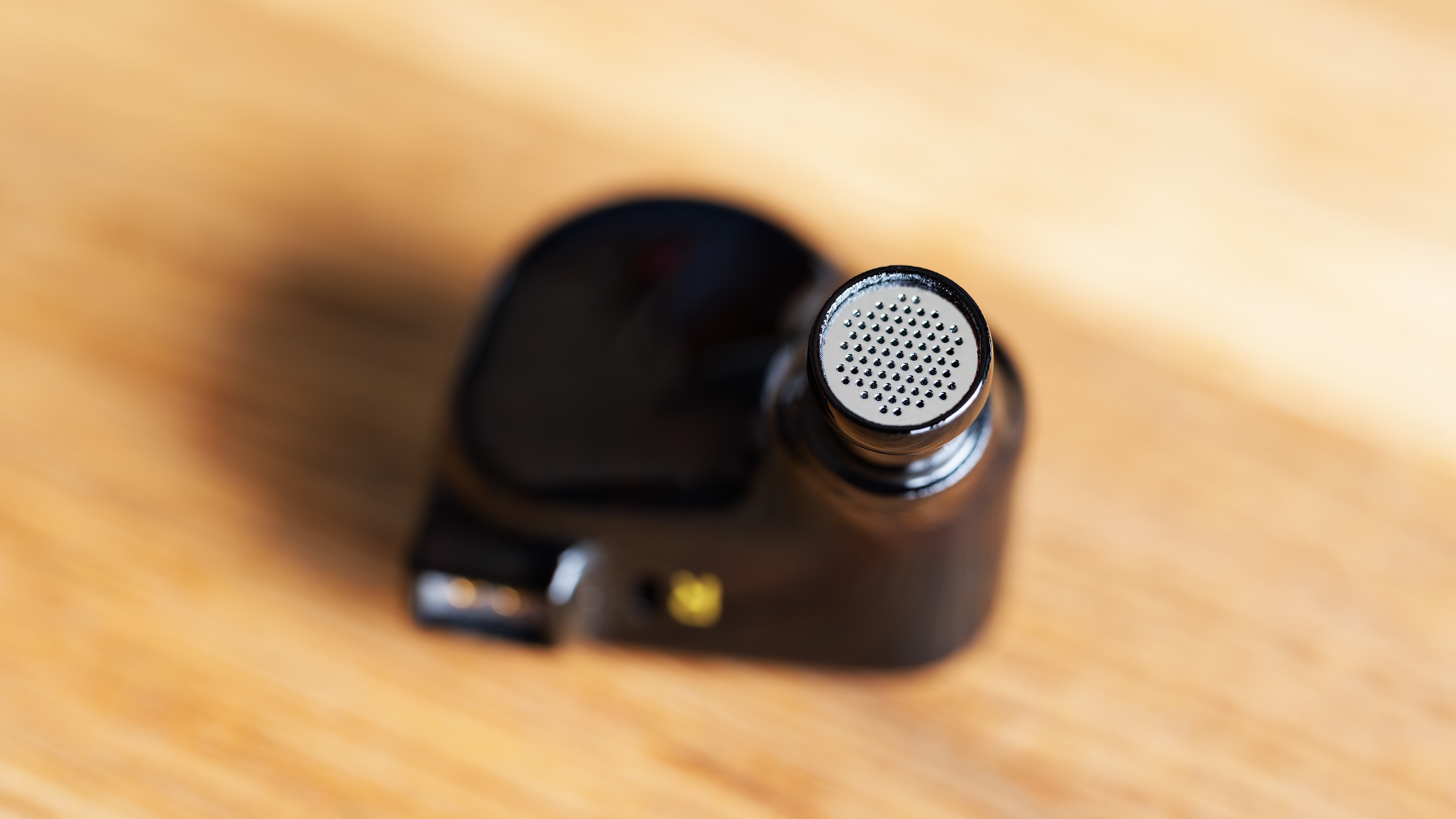
There is one compensation hole per each earphone, located in close proximity to a 2-pin connector. L and R are marked in bright golden letters. Small edgings for fixing the eartips were made, too.
Overall, they are quite good and even stylish. The only issue is microscratching that affects the enclosure right off the bat. But it’s not really perceptible to the eye.
On top of that, the earphones act as a magnet to fingerprints. The cable is just decent. It doesn’t get too tangled, and the earholders are made at the right angle. The metal splitter is solid black, with the company logo printed on it.
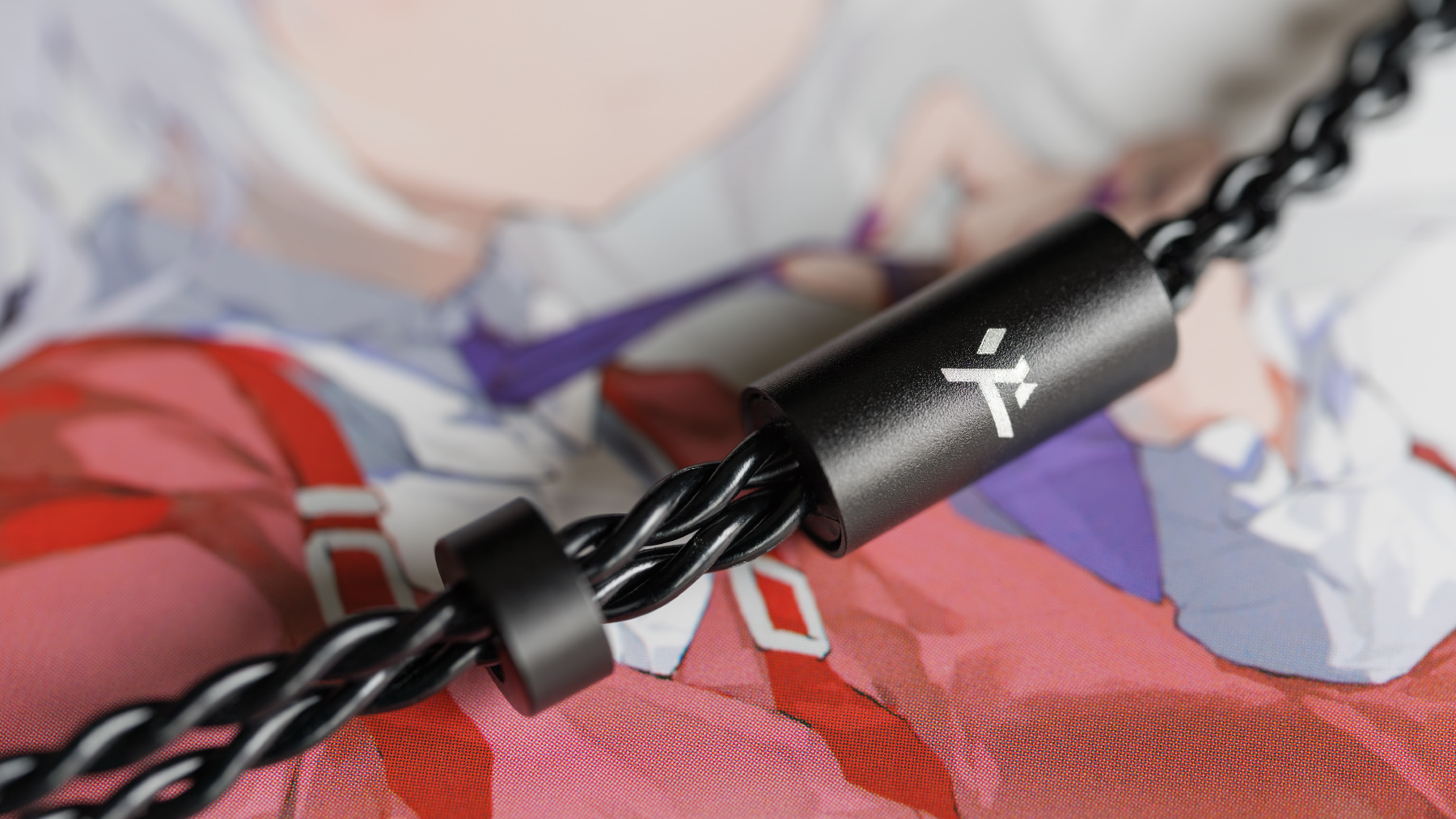
The very same cable comes with Truthear HEXA and Zero earphones. The case is made decently, too, but it does not have any internal compartments or partitions. I already wrote about how an adequate case should be designed 5 years ago – no one has released anything alike yet.
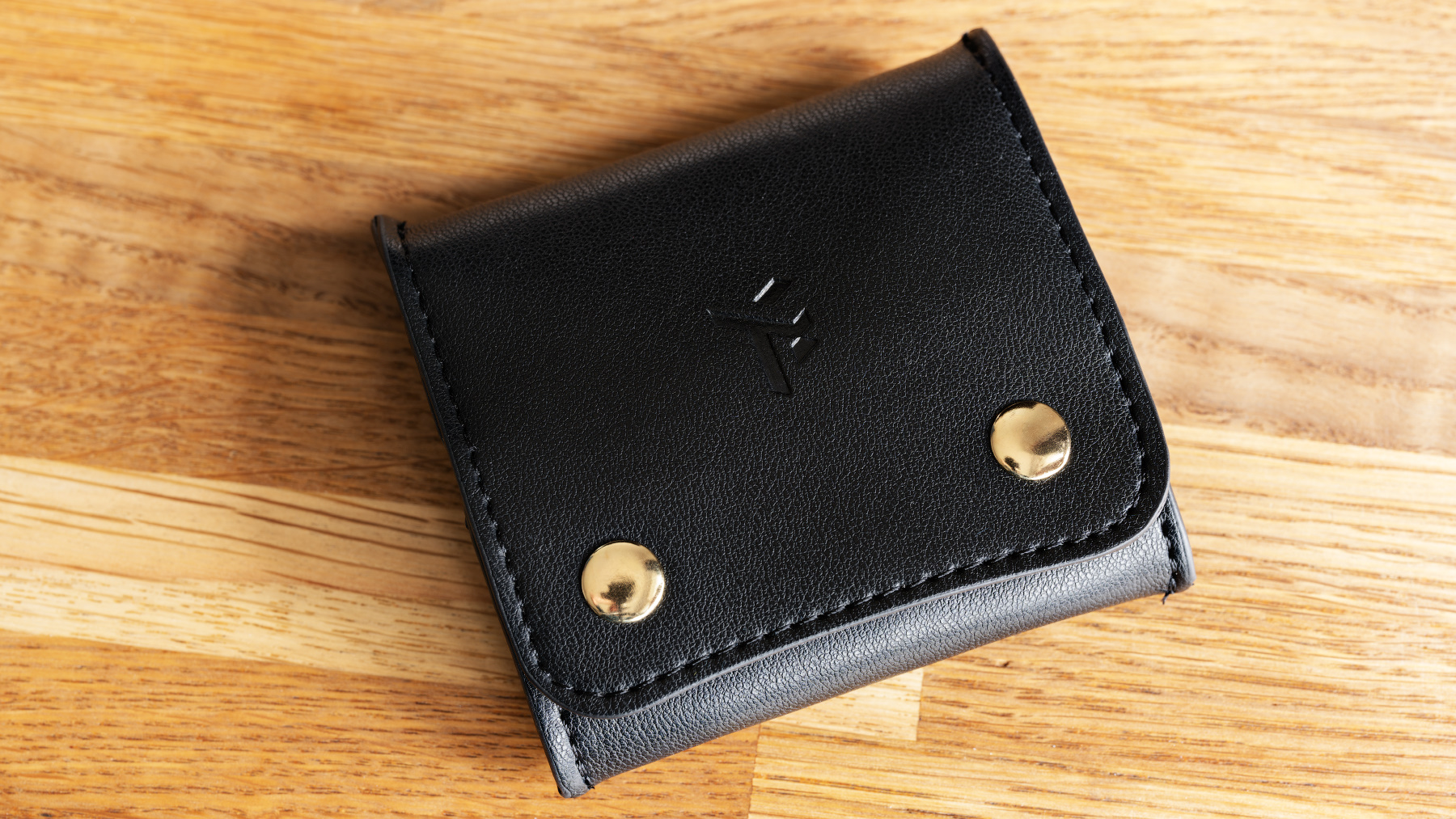
Ergonomics
The geometry of the RED enclosures turned out to be perfectly compatible with my ears. They don’t have any strange concavities, bulges, or sharp edges, the sound ducts are positioned at a natural angle, the dimensions of the enclosures are… ordinary, only a little thick. Just put them in and listen to music. And they don’t have much weight at all.
I’ll assume that the sound ducts may turn out to be uncomfortably large for owners of small ears, because, let’s be honest, these are not sound ducts, they are simply muzzles. Probably, when you get a first taste of these earphones, you will want to change your favorite eartips for the same, but smaller ones.
The flipside is the noise insulation — RED’s one is above average because the earphones fit in tightly.
As for the 10-Ohm adapter, it is not convenient to use it on the go: a few centimeters long, thin rigid structure will stick out of the player audio output, which can easily damage the connector if stressed accidentally.
Quick specifications overview
- Design: in-ear closed-back.
- Drivers: 2 dynamic drivers.
- Impedance: 18 Ohms.
- Sensitivity: 117 dB.
- Connectors: classic 2-pin, 0.78 mm.
- Weight: 6 g (each earphone).
Subjective sound impression
RED sound great: balanced and new at the same time. Imagine that a ‘top-up’ of a very weighty and fast subbass was added to neutral sound delivery, which never overlaps the bass for a moment, not a iota, let alone the mid-frequency range. What’s more, a lot of well-articulated high frequencies were poured in (we’re talking about the 3-10 kHz range), but not those that get sandy, filled with sibilants that grate on the ear. They are just heard very well. This is, you know, sort of ‘a joy of a HF-phobe who still wants a lot of HF’. With this in mind, the middle range is perceived to the utmost, there are no dips and curbs there, and it is just excellent.
The result is a ‘smooth’, but vibrant and simultaneously informative sound delivery with a stable low-frequency basis, perceived as ‘dynamic’ and ‘detailed’. It is ten kinds of cool, simply brilliant tuning that retains its uniqueness and accuracy far beyond the price category of these earphones.
Against the background of the high frequencies delivered in this fashion, RED have a clear and wide virtual sound stage with a clear localization of instruments. It could be better, but in a very, very different price bracket.
Why the RED sound might not work for someone:
- The sound is not ‘thick’. And that’s exactly how a normal bass, separated from the subbass, not affecting the midrange, sounds like.
- “I hear something that’s out of place”. When mixing, the authors decided to make the recording ‘brighter’ or simply did not handle the sound very carefully, having thought that no one would hear the nuances. If this was the case, RED will let you hear weird synthetic glide sounds, abrupt high-frequency sounds etc. To cut it short, you will hear a lot of blatant defects in the music poorly recorded and mixed, as well as a lot of new and amazing things in the well-recorded and -mixed one.
- There’s not enough subbass. And here comes the 10-Ohm adapter included. Upon its connection, the bass and subbass are raised by 3 dB (see the next section). Even if everything is fine with your subbass perception, when using RED in an urban environment, the low-frequency range being masked with external sound sources may require the usage of this adapter.
- The ultra-high frequency range (from 10 kHz and above) could be more delicate. Actually not, it couldn’t because the earphones cost 5,000 rubles and not 50,000.
- To sum up, in terms of frequency balance, the RED sound is truly unique and one of a kind. For me, RED have become the first in-ear headphones in a month of Sundays that made me freeze on the spot when listening to music that I’ve been familiar with for a lifetime.
Measurements
The earphones were connected to the RME ADI-2 DAC (IEM output). A measuring rig conforms to the IEC60318-4 standard. The provided eartips were used for measurements. The smoothing is indicated on the graphs. For the info about rigs, graphs and headphones measurements, refer to my article. Frequency response:
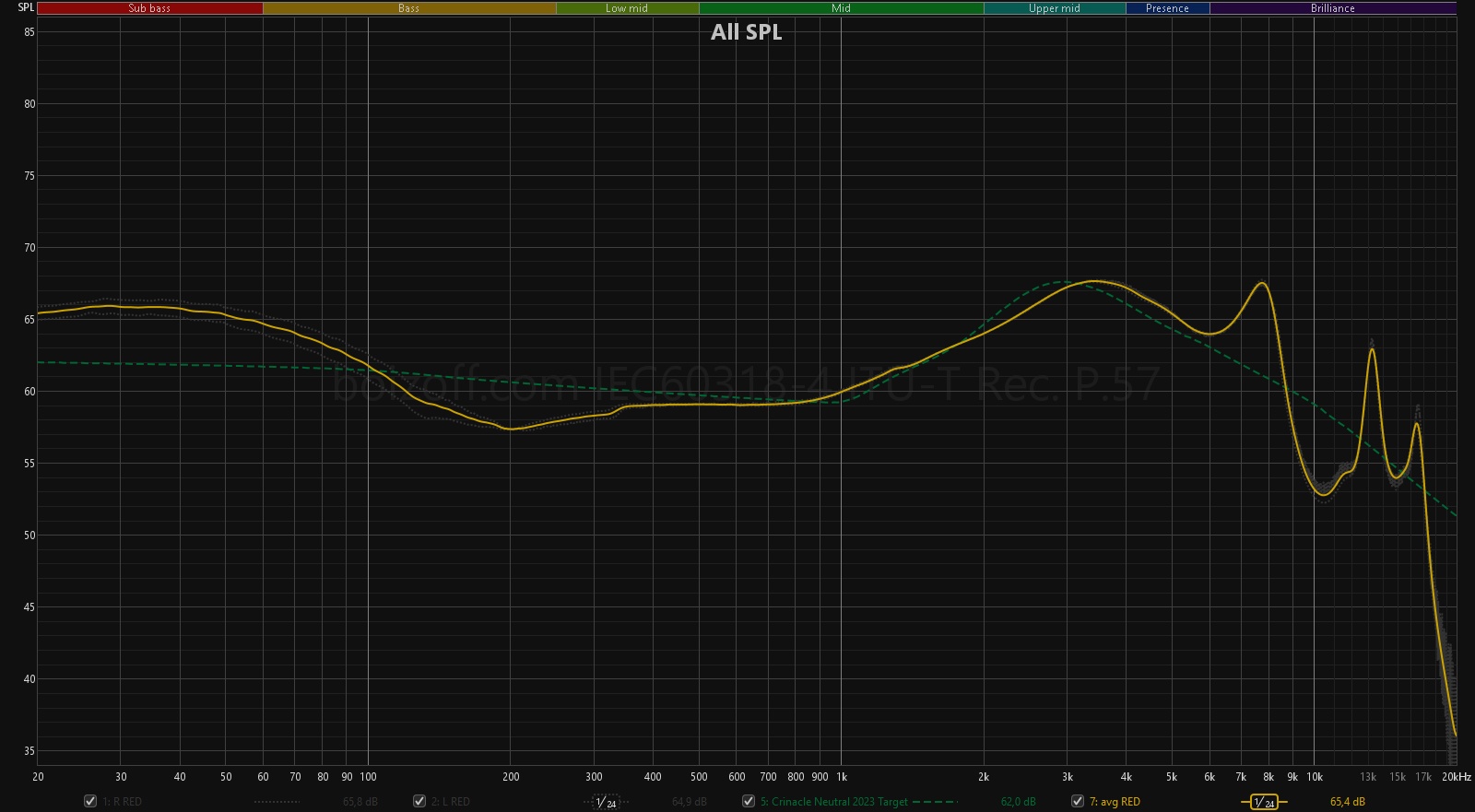
Keep your eye out for the dashed green line – this is the target curve conventionally named Crinacle Neutral Target 2023. This target curve was proposed by Ako in April 2023 as an alternative to the Harman curve, which is appreciated by far from everyone. The diffuse field curve measured at the Type 5128 rig manufactured by Brüel & Kjær was used as a basis, which was then transferred to the IEC711 rig and ’tilted’ clockwise. Why it was done and why this way – I will try to answer these questions in detail in another article on the theoretical part of measurements, but I won’t go deep at the moment.
What matters is that this is not just a tuning. This is a very specific tuning that has been contemplated on for quite a while. To put this in perspective and see something more common, here is the frequency response of RED and the most current Harman curve:
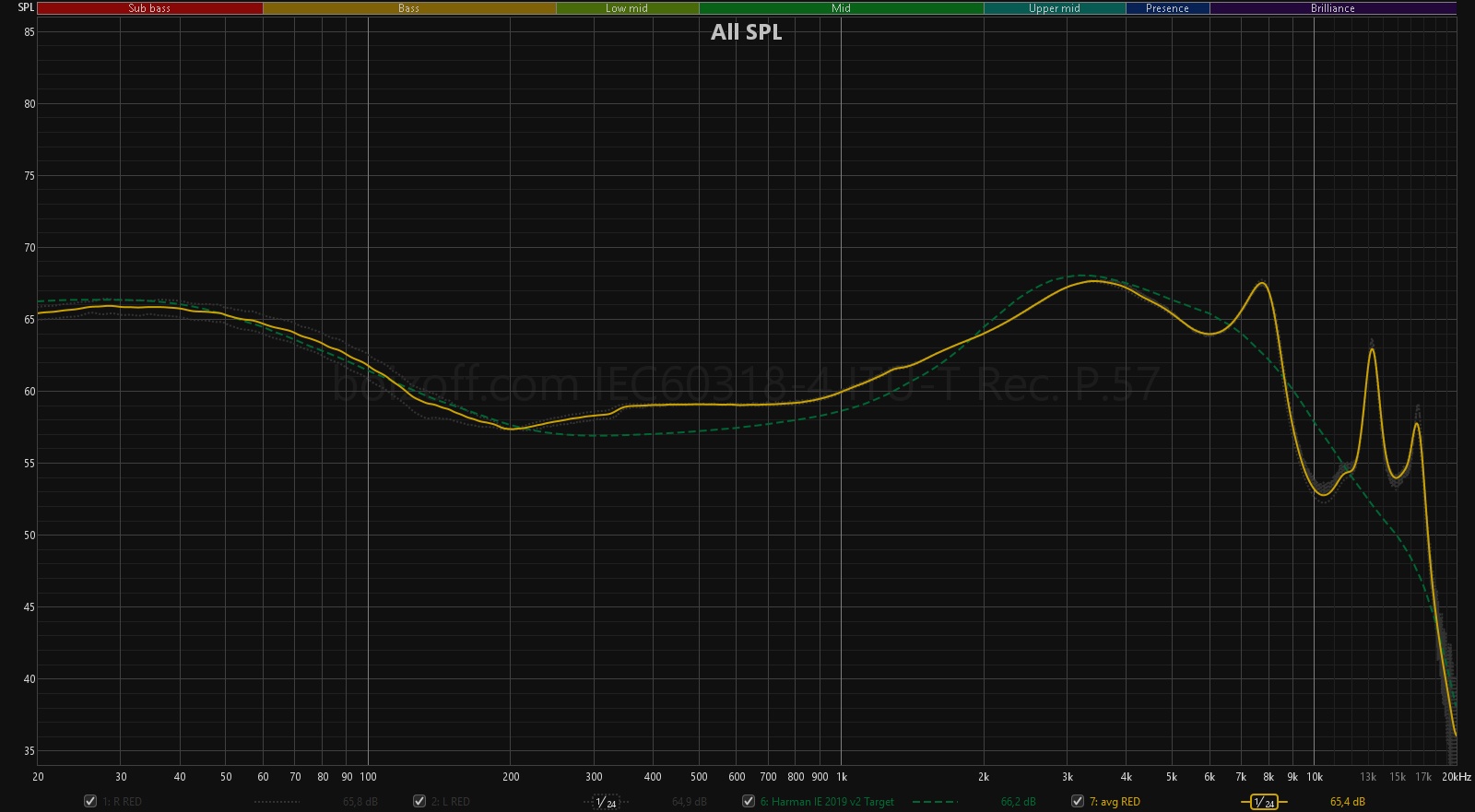
And the situation here is very interesting:
- up to 200 Hz, the RED frequency response corresponds to the Harman curve in shape;
- 200 Hz are ‘sunk’, and this is what gives a feeling of elastic, full-fledged subbass;
- at low frequencies and in the middle, there is a smooth addition of up to 2 dB at maximum;
- the midrange rise is shifted from 2.7 kHz slightly to the right;
- peaks after 13 kHz are most likely aberrations of the rig, I personally do not hear them.
Does such sound tuning have a right to life? My ears tell me that yes, more than that. As a reminder, there is a 10-Ohm attenuator included.
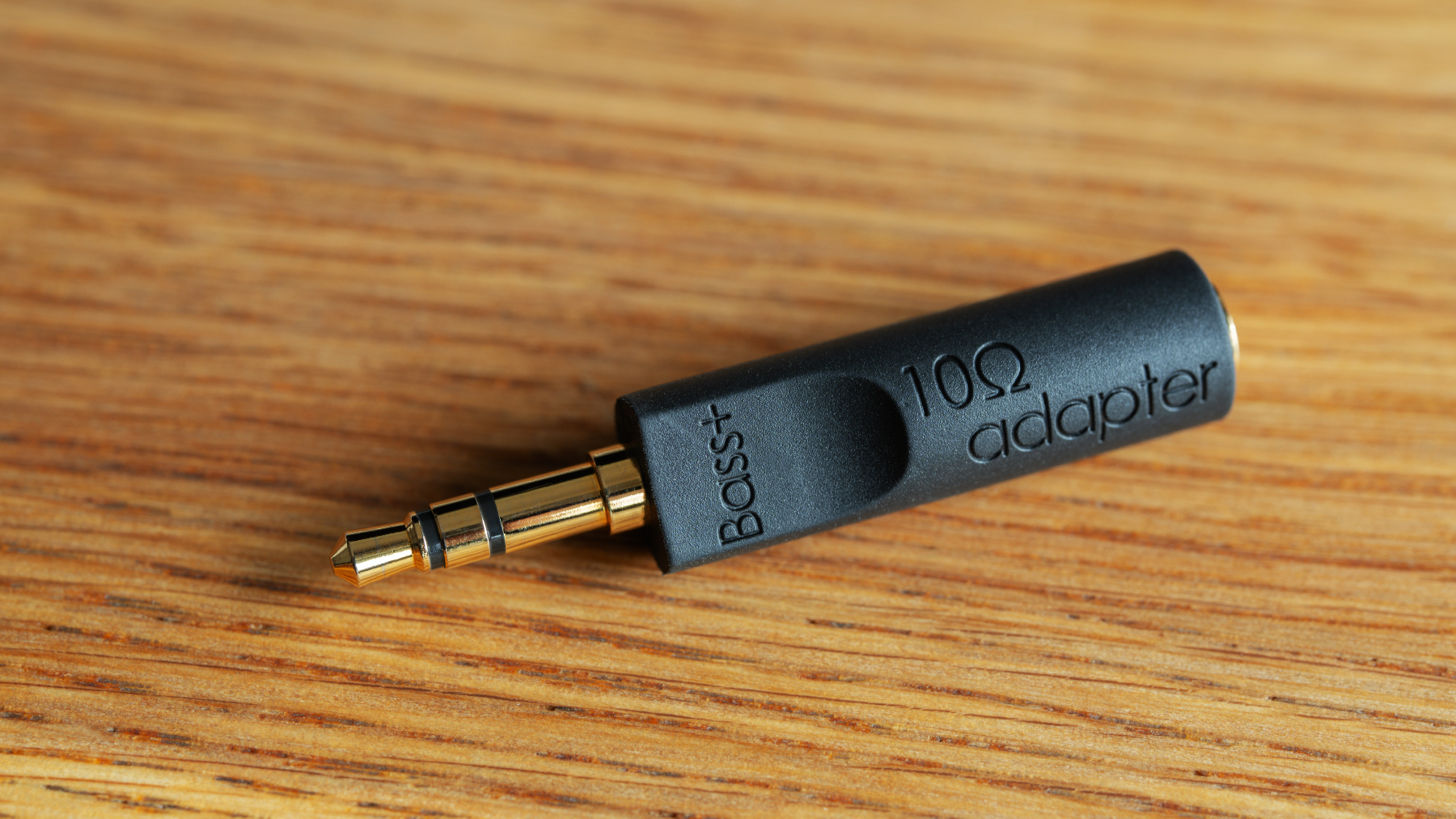
When it is connected, the left part of the frequency response graph rises predictably, and the sound becomes more ‘common’:
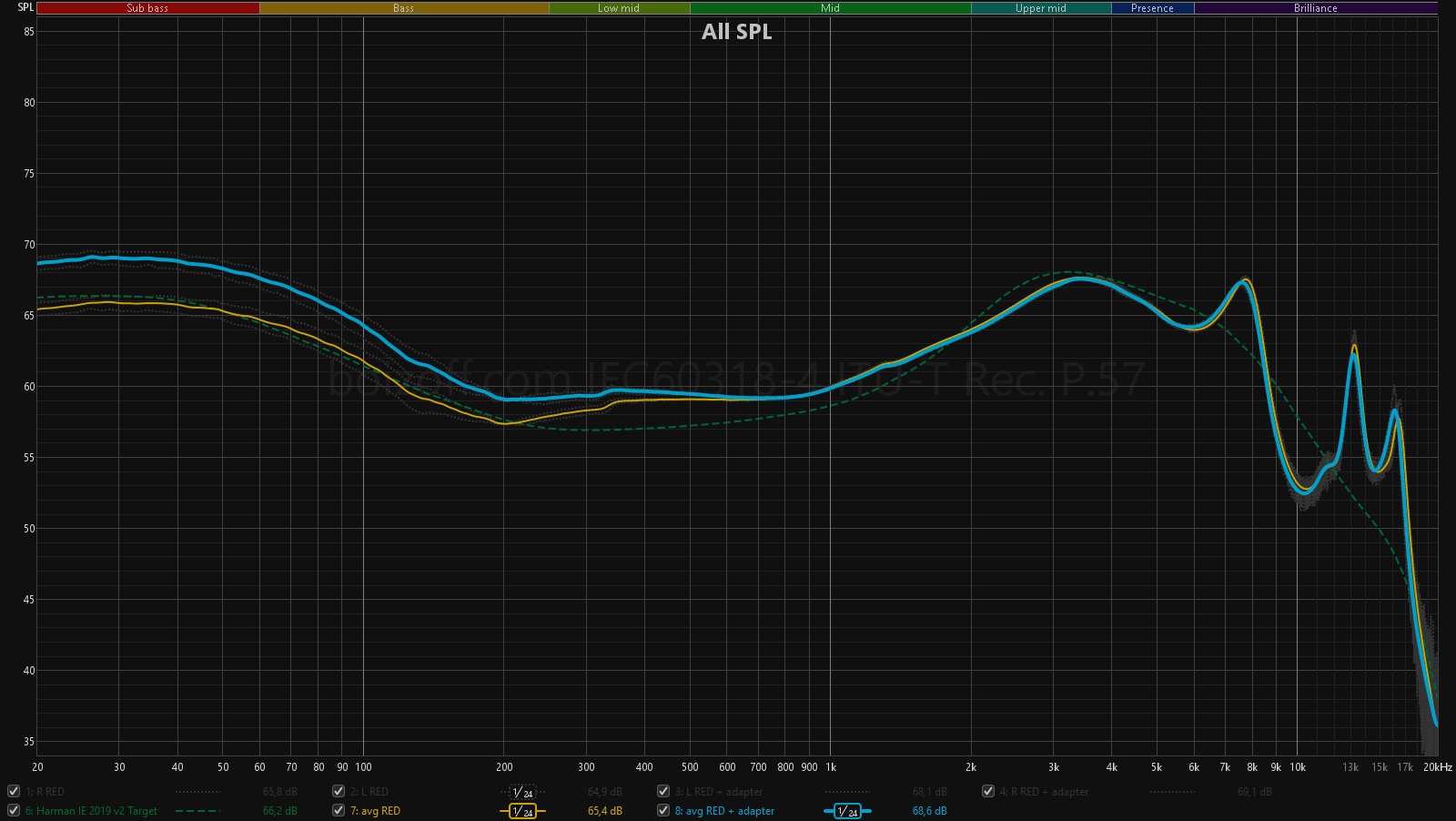
The left/right volume balance is not ideal, but acceptable:

Nonlinear distortions (these are measurements that should not be 100% trusted because my equipment is far from perfect):

Sound source choice
For my listening tests, I’ve connected the earphones to the following devices.
- PC + RME ADI-2 DAC fs (IEM output) – unbalanced connection
- PC + RME ADI-2 DAC fs (‘High Power’ mode) – unbalanced connection
- Hiby R6 gen 3 ( Gain – High, Amplifier Operation – Class AB/A)
The sources were switched by a mechanical input switch.
With Hiby R6, the earphones’ sound is a little more bassy and solid. I didn’t hear any other difference in the sound of RED when using various sources.
Eartip choice
I didn’t like the eartips provided.

Three left pairs have a clearly smaller diameter compared to one of the sound duct and are just difficult to pull on. The right pairs fit the sound ducts easier, but just like the left ones, they’re not really soundproof.
As for foam eartips, I just don’t like them.
In short, I tested RED with TRI Clarion, and the same I recommend to you. The fit is comfortable, deep and tight enough.
Comparisons
PLEASE NOTE: everything I say below is only applicable to the earphones from the point of view of comparison to other models, nothing more!
RED vs. Truthear HEXA
The Truthear x Crinacle ZERO: RED and Truthear HEXA frequency response graphs compared:

Subjective difference in sounding
- RED are much bassier as compared to HEXA.
- HEXA have a more pronounced middle range and less accentuated upper frequencies.
- However, the upper frequency range of HEXA is less even, so the peak of nearly 7.5 kHz is perceived more clearly with HEXA.
Compared to each other, RED’s sound can be called ‘V-shaped’, with their sound delivery more versatile, whereas HEXA are more ‘reserved’ and ‘neutral’.
RED vs. Moondrop May
I’d like to note that comparing RED earphones and, in fact, DAP+earphones, which is what May is, is incorrect. Therefore, below we will talk only about the sound. May were connected via their standard DSP cable, and the equalizer was set to ‘Standard’.
The Truthear x Crinacle ZERO: RED and Moondrop May frequency response graphs compared:
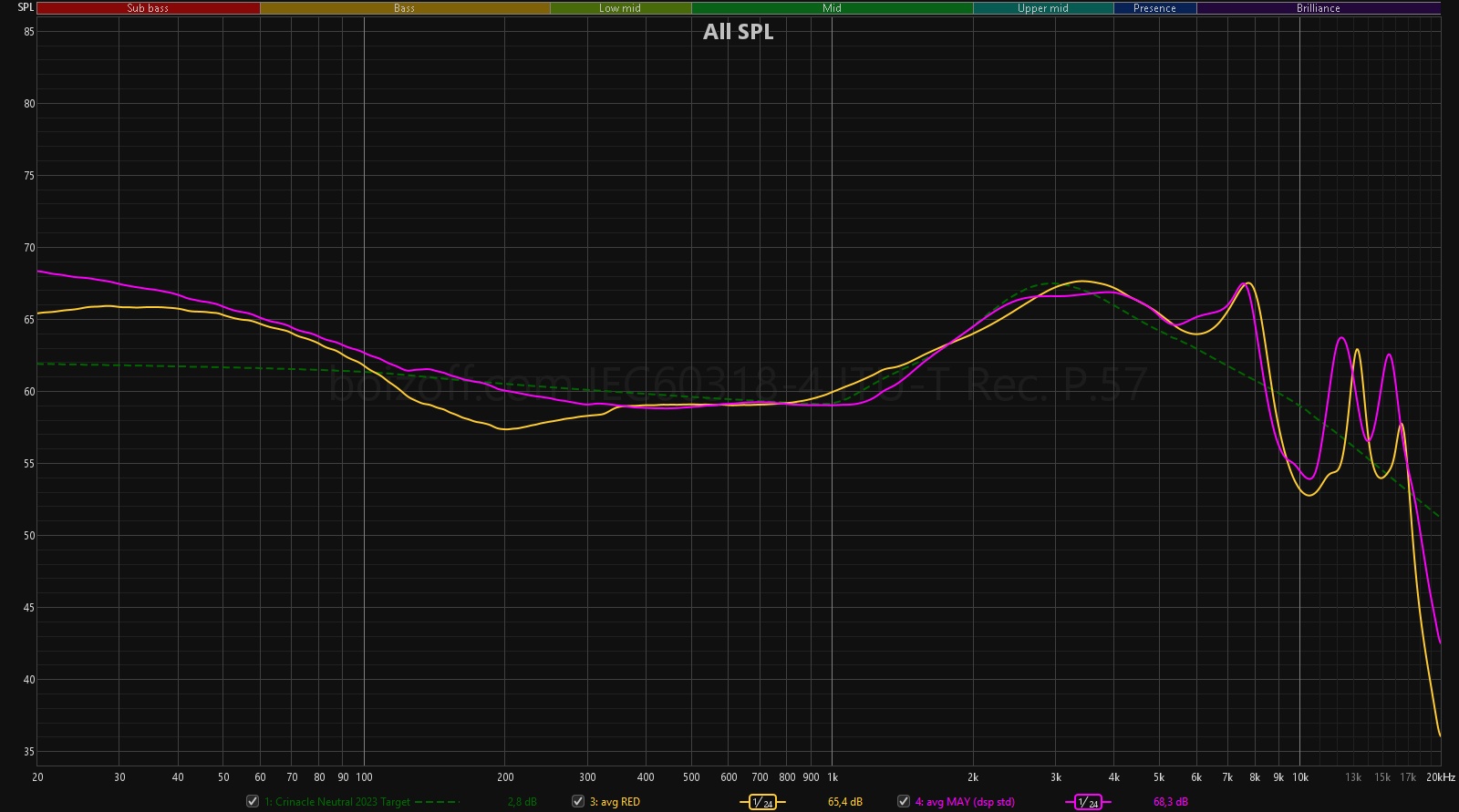
Subjective difference in sounding
- May highlight the range of about 6 kHz in a stronger manner, their sound is more sonorous and sharp.
- The voices in May’s interpretation sound noticeably closer.
- May give the sound a little more ‘physicality’ and ‘dirt’.
Compared to each other, RED’s sound can be called more ‘neutral’ and even ‘intelligent’, whereas I would characterize May’s sound delivery as ‘rougher’, less ‘balanced’, more ‘subjective’.
Summary
The Chinese economic ramp-up, the development of manufacturing technologies for drivers and enclosures, as well as the development of knowledge about sound in in-ear headphones let us buy a product for 5,000 rubles in 2024, for which sound they would have charged us good 50 thousand without batting an eyelid and turning a hair 10 years ago, although it seems questionable to me that someone would have been up to such tuning at that time.
And I’m quite agreeable to give credit to Crinacle: while I honestly wrote in the KZ Zex Pro review that the earphones were frankly poorly tuned (whether through Crinacle’s fault or not, I have no idea), RED is a completely different story. This is just an example of how to proceed from competence in the field of headphone measurements to successful headphone production.
I am not inclined to believe, of course, that this was a sole effort of Crinacle — everyone sang in harmony, both him and Truthear as the immediate manufacturer.
In general, everything is both clear and complicated about RED at the same time: these are earphones with a universal fit and eminently calibrated tuning, combining neutrality, detail, weight, dynamics and lack of listening fatigue in equal measure. Top it off, there is a 10-Ohm attenuator included for those who ‘starve for the lower section’. To buy or not to buy: to buy, at least just for the fun of learning what kind of tuning is this!

